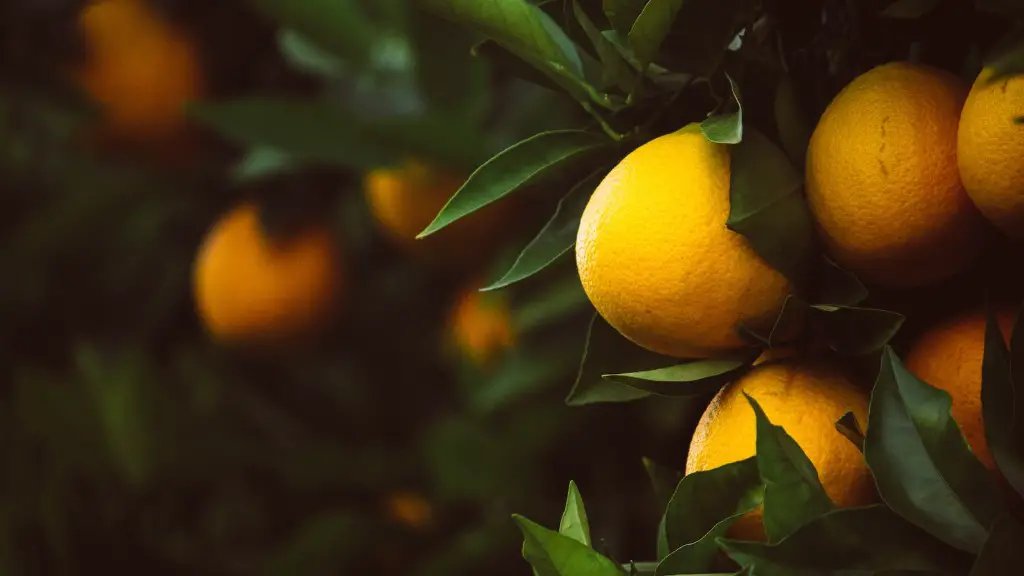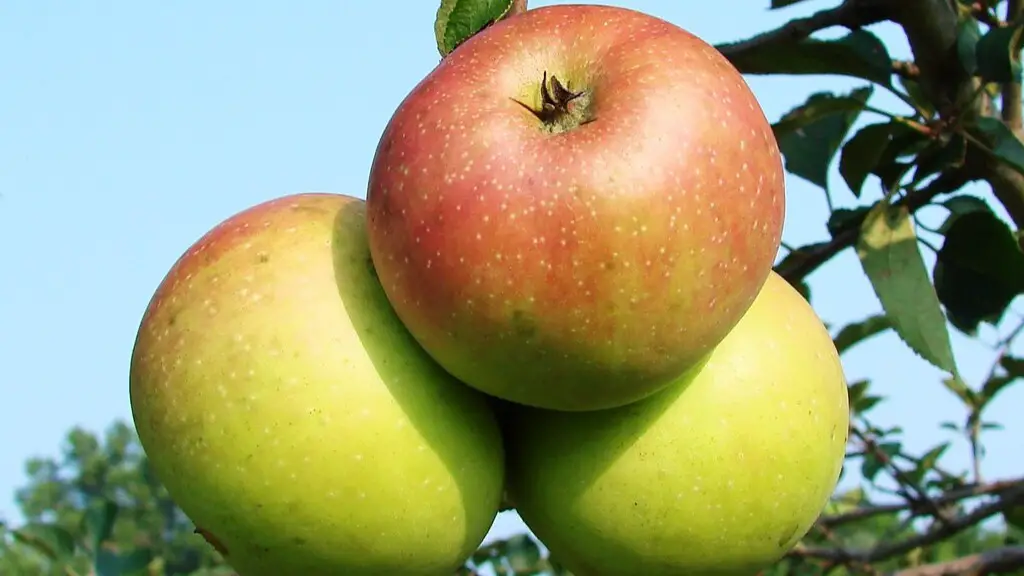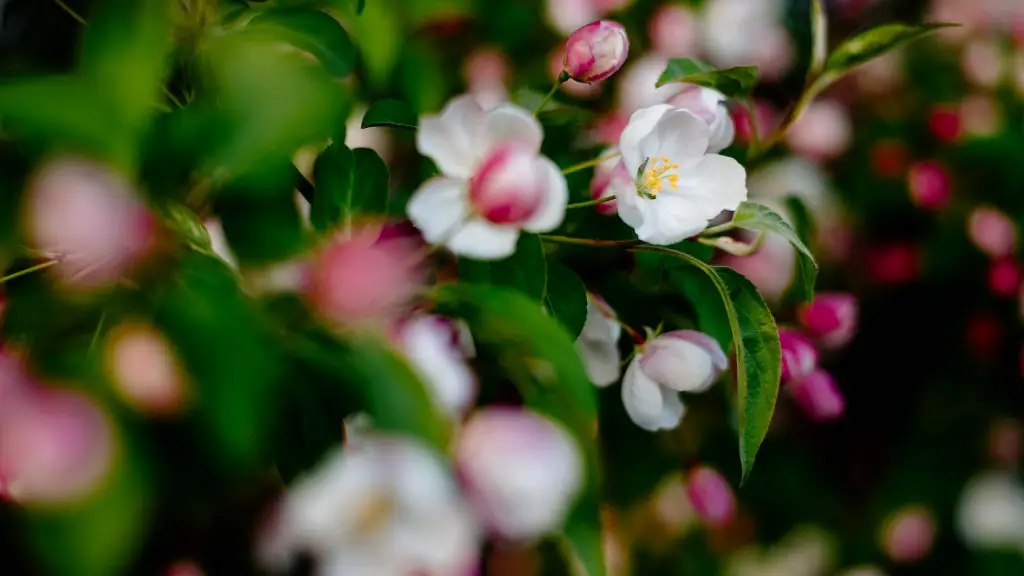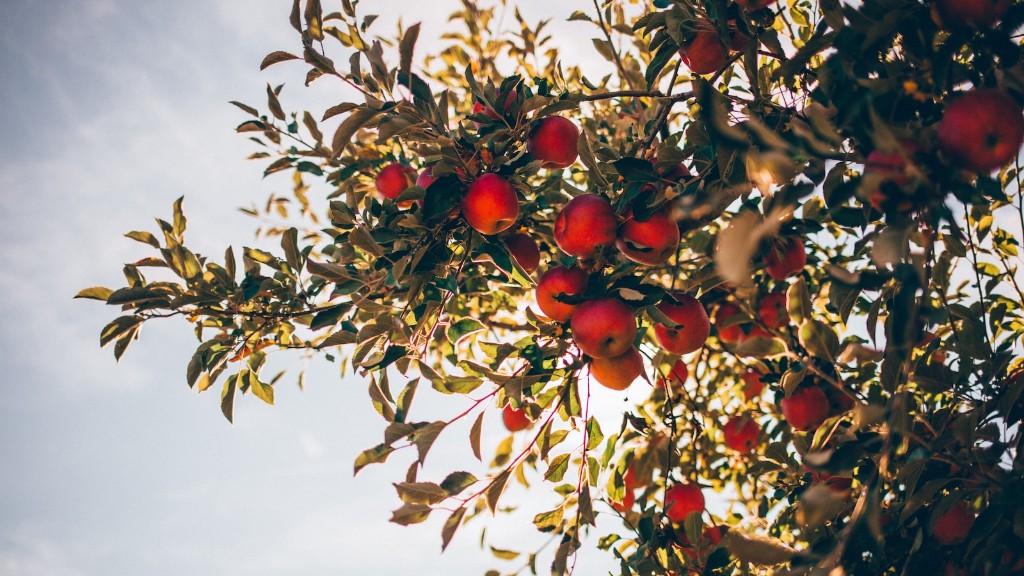Contrary to popular belief, you can grow a lemon tree indoors. While it might be more challenging to reach the tree’s full-size potential, it is still possible to do so. In order to grow a successful lemon tree indoors, you’ll need to consider both light needs, as well as soil, water, and fertilizer requirements.
When it comes to sunlight, lemons prefer full sun, but they can tolerate some partial shade as well. Aim to find a spot in your home where the tree can receive at least four to six hours of bright, direct light each day. Additionally, during the winter, provide a powerful artificial indoor light to provide your lemon tree with the light it needs to thrive.
When it comes to soil and water, loamy, well-draining soil is ideal. The soil should remain moist but not soggy, so check the moisture level in the soil every few days. If it has dried out, add a bit more water, but try to avoid overwatering as this can lead to root rot.
Fertilization is also important when it comes to a successful indoor lemon tree. Feed the tree citrus fertilizer in spring, summer and fall to provide it with the necessary nutrients.
Finally, make sure to rotate your lemon tree on a regular basis so that all parts of the tree get equal light exposure.
Caring for Your Indoor Lemon Tree
Now that you understand the basics of how to get started with a lemon tree, there are a few other things to keep in mind as you develop your lemon tree care routine.
In order to keep its size manageable, you will need to prune it regularly. The tree should also be dusted occasionally to keep the leaves and fruit clean. Be sure to inspect your tree frequently for any signs of pests, disease, or distress, and treat them immediately.
Finally, as the tree grows, you may find that it needs to be repotted. When you do so, be sure to use a rich, organic potting soil that drains well and is rich in nutrients.
Container Gardening Tips
Container gardening is perfect for novice gardeners who may not have access to outdoor gardening space, or for experienced gardeners who want to add some unique and interesting plants to their indoor collection. When it comes to container gardening, here are a few tips to keep in mind:
Choose the right container. Different types of plants require different containers, so make sure to select one that is the appropriate size and shape for the plant you are growing.
Provide good drainage. Make sure that the container you choose has adequate drainage to prevent overwatering.
Pay attention to the soil. Select a soil that is specifically designed for the type of plant you are growing.
Make sure the container gets enough light. Most plants need plenty of light, so make sure to choose a spot that gets plenty of sunlight.
Water appropriately. Different plants need different amounts of water, so make sure to research the specific needs of the plant before watering it.
Harvesting Your Indoor Lemons
Harvesting outdoor-grown lemons when they are ripe is usually as simple as plucking them off the tree. However, if you are harvesting indoors, it is a bit trickier. The best way to tell if your lemons are ripe is to inspect them closely. Ripe lemons should be yellow and slightly soft to the touch.
You can also pick lemons at any stage in their life, depending on how you plan to use them. For instance, lemons can be harvested before they are ripe and still be used for juice and pickling purposes. Or, if you plan to eat the lemons fresh, then you should wait for them to reach their peak ripeness.
Finally, when it comes time to harvest, it’s best to use pruning shears, or scissors, to cut the stem of the lemon so that it doesn’t tear or damage the tree.
Repotting Your Indoor Lemon Tree
It is important to keep your lemon tree in the same container for as long as possible, as repotting can be stressful for the plant. However, due to the growth rate of the lemon tree, you may need to repot it in a larger container every few years.
Choose a pot that is at least twice the size of the original pot and make sure it has good drainage. Add fresh soil to the new pot, as well as compost or fertilizer, if desired. Then, gently remove the lemon tree from the old container and place it in the new one. Be sure to press the soil firmly around the roots to ensure that they are securely in place.
Finally, water the tree thoroughly so that the soil is nice and moist. Keep in mind that the tree may take some time to adjust to its new environment, so be patient and provide it with the proper care.
Protecting Your Lemon Tree from Pests and Diseases
Pests and diseases are common problems for lemon trees, both indoors and outdoors. To prevent pests and diseases from having an adverse effect on your indoor lemon tree, make sure to inspect your tree regularly for any signs of pests or disease. Additionally, be sure to provide the tree with ample sunlight and the proper care, as this can help to prevent any issues from arising.
If you do spot any pests or diseases, take action immediately. Common pests, such as aphids and spider mites, can usually be controlled with a mild insecticidal soap spray. As for diseases, such as root rot or powdery mildew, make sure to adjust the tree’s soil, water, and fertilizer to prevent the spread of the disease.
Finally, make sure to keep your lemon tree away from other plants, as diseases and pests can easily spread between the two. By following these steps, you can ensure that your indoor lemon tree will remain healthy and thriving for years to come.



